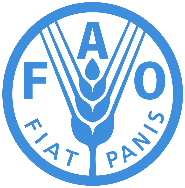Rangeland Rehabilitation guideline
| dc.contributor.author | FAO KSA | |
| dc.date.accessioned | 2023-11-16T11:20:30Z | |
| dc.date.available | 2023-11-16T11:20:30Z | |
| dc.date.issued | 2022 | |
| dc.description | The present guideline is produced within the framework of the project UTF/SAU/051/SAU, titled 'Enhancing MoEWA's Capacity for the Implementation of the Sustainable Rural Agricultural Development Programme (SRADP)and more specifically the subcomponent “sustainable rangeland management”. This subcomponent aims at presenting the concepts and the main techniques of rehabilitation that can be adopted by the Rangeland Department of the established National Center for Vegetation Cover Development and Combating Desertification, to improve the pastoral productivity in the selected rangeland sites in common agreement with all stakeholders including the pastoral communities, the end users. This guideline can further assist MoEWA, private sector actors, contractors, and the public generally to gain additional information about recommended procedures in the vegetation rehabilitation process and effective environmental management. Furthermore, the kinds of people for whom this guideline is designed, range from natural resource managers and planners and those engaged in policy development to research workers, teachers and students. This guideline arises out of a need to provide clear direction to the efforts of the National Center for Vegetation Cover and Combating Desertification (NCVC) of Saudi Arabia in planning and implementation of rangelands rehabilitation and revegetation activities associated with the implementation of the Rangelands initiative under NTP 2020 of Vision 2030, the Rangeland Strategy and Saudi Green Initiative (SGI). Under the rangeland initiative, 300,000 hectares of rangelands are planned to be rehabilitated before 2030. | |
| dc.description.abstract | The document outlines key rehabilitation techniques for Saudi Arabian rangelands, emphasizing the importance of tailored approaches based on specific conditions. It covers water harvesting methods to address water waste and erosion, soil scarification for flat areas, rainwater harvesting systems, direct seeding as a cost-effective option, and the benefits and challenges of planting fodder shrubs. The document also underscores sustainable rangeland management practices, including monitoring, participatory approaches, and grazing management, with a focus on achieving long-term productivity and ecological health. | |
| dc.description.sponsorship | The UTF/SAU/051/SAU project: ‘Strengthening MoEWA’s Capacity to implement the sustainable Rural Agricultural Development Programme (SRADP). | |
| dc.identifier.uri | https://docs.faoncvc.info/handle/123456789/30 | |
| dc.language.iso | en_US | |
| dc.ncvcdepartments | Rangeland | |
| dc.publisher | FAO NRM KSA | |
| dc.subject | rangelands monitoring | |
| dc.subject | rangeland degradation | |
| dc.subject | rangeland improvement | |
| dc.subject | guideline | |
| dc.title | Rangeland Rehabilitation guideline | |
| dc.type | Technical Report |

